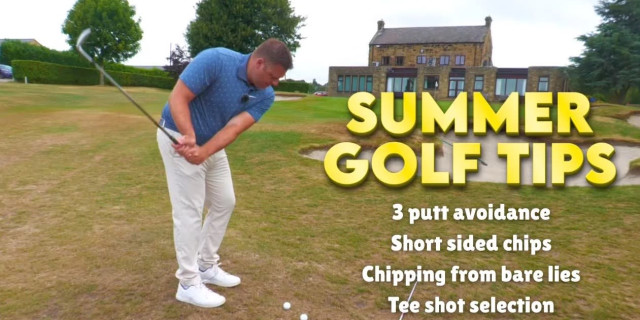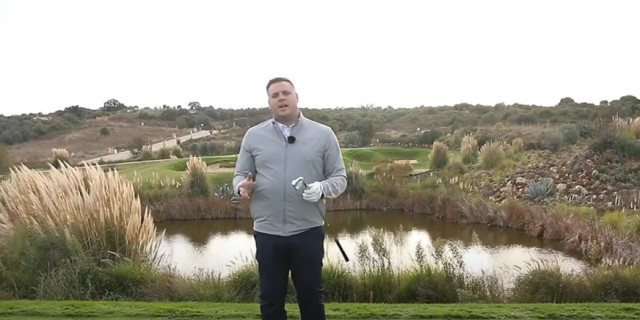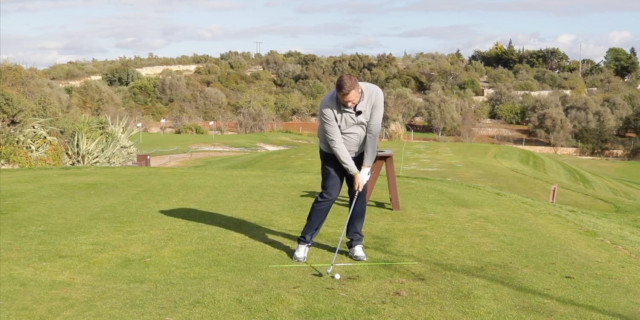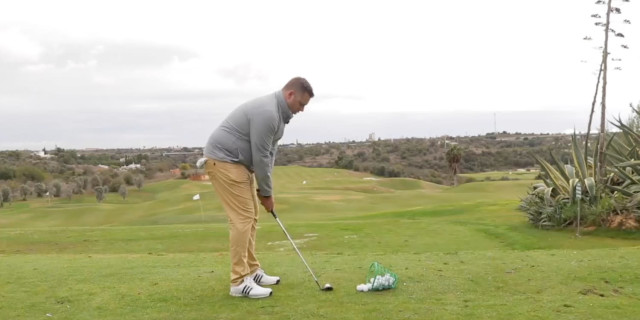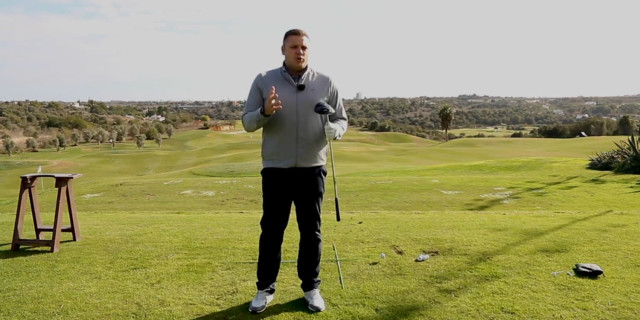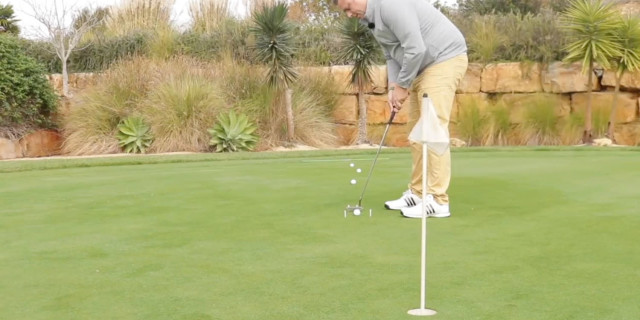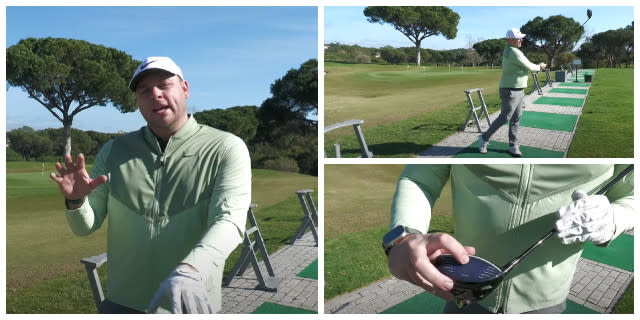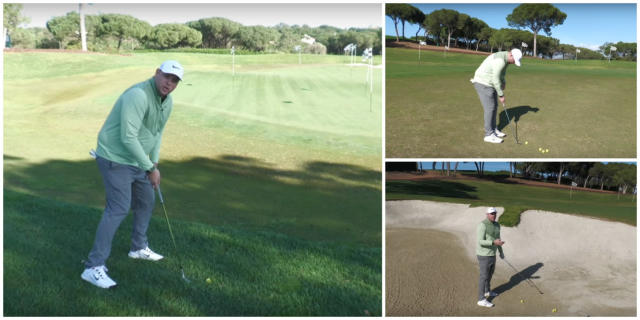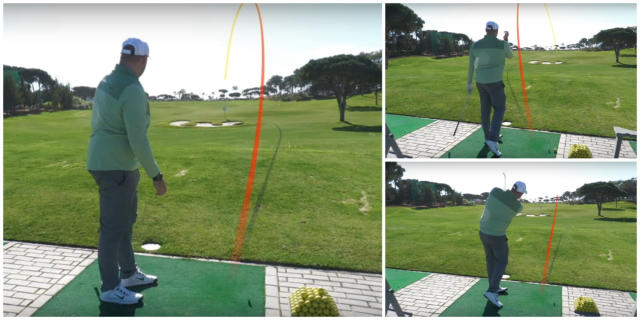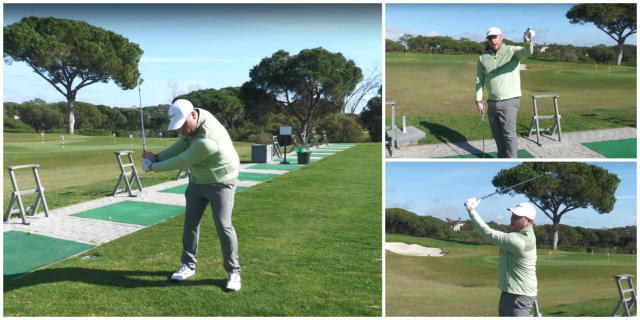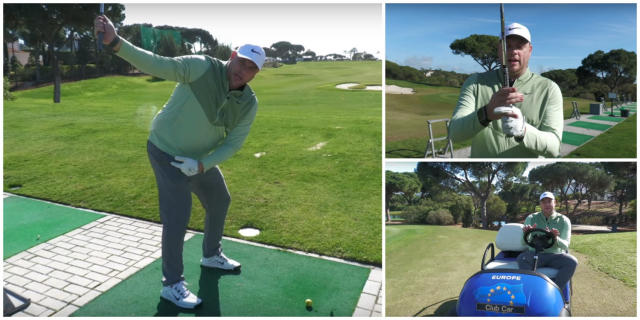Nearest Point of Relief
There is one particular subject on the Rules of Golf that I have great difficulty in explaining in terms that can easily be understood (just ask my wife!). And yet, it concerns an important area that every golfer must get right if they are to play the game properly. It is of course, ‘nearest point of relief’. The reason that it is so important is that you cannot play many rounds of golf without coming across one of these four circumstances that require dropping at the nearest point of relief.
Interference to your stance, or area of swing by an immovable obstruction. Examples of immovable obstructions are artificial paths, fences, bridges, or fixed course furniture, like ball washers, benches or direction posts.
Interference from an abnormal ground condition. Under the Rules there are three types of abnormal ground condition; areas of casual water, ground under repair as designated by a Committee, or a hole, cast or runway made by a burrowing animal, reptile or bird.
When your ball lies on a wrong putting green, which is any putting green other than the one on the hole being played, including the practice putting green.
When there is a Local Rule protecting young (staked) trees.
In the first three situations the Rules state that players may take relief, without penalty, by dropping a ball within one club length of the nearest point of relief, whereas Local Rules usually make it mandatory to take relief from staked trees, and often from ground under repair.
Now let me get to the point that most, yes most, players get wrong. There is only one physical point on the golf course that qualifies as the nearest point of relief. OK, so very occasionally there could be two equidistant points, but let’s ignore that detail for the purpose of this article. That nearest point could be in deep rough, in the middle of a bush, behind a wall that is not in the intended area of swing, or even within the trunk of a tree. Yes, you did read that correctly, the nearest point of relief may be within the trunk of a tree. So, how do you measure the club-length, in which you must drop your ball, if that is the case? The answer to that is that you have to estimate the distance. So, if nearest point is in the centre of the tree trunk and the radius of the tree is half a club-length, then you may drop within another half club-length from the edge of the tree, not nearer the hole.
The mistake that many players make is that they think that when they are taking relief in one of the above circumstances it means that they get relief from anything that makes their next stroke more difficult and drop a ball where it suits them. This is wrong. It is always the nearest point of relief from the interference by whatever circumstance is permitted by the Rules (e.g. pathway, bench, casual water, hole made by greenkeeper) and nowhere else. The player may not choose the nicest point of relief; you may only drop within a club-length of the nearest point of relief, not nearer the hole. For this reason you should always determine where the nearest point is before you lift your ball, in case it happens to be in a position that is even more unfavourable than your current lie. Of course, if relief is mandatory then this does not apply.
Here is the Rules book definition of ‘Nearest Point of Relief’;
“It is the reference point for taking relief without penalty from interference by an immovable obstruction (Rule 24-2), an abnormal ground condition (Rule 25-1) or a wrong putting green (Rule 25-3).
It is the point on the course nearest to where the ball lies:
(i) that is not nearer the hole, and
(ii) where, if the ball were so positioned, no interference by the condition from which relief is sought would exist for the stroke the player would have made from the original position if the condition were not there.
Note: In order to determine the nearest point of relief accurately, the player should use the club with which he would have made his next stroke if the condition were not there to simulate the address position, direction of play and swing for such a stroke.”
In case you still don’t believe me that the nearest point of relief could be in a middle of a tree here is the relevant Decision 24-2b/3.5;
Q. In proceeding under Rule 24-2b(i) or Rule 25-1b(i), the Definition of "Nearest Point of Relief" provides that to determine the nearest point of relief accurately, the player should use the club, address position, direction of play and swing (right or left-handed) that he would have used from the original position had the obstruction or condition not been there. What is the procedure if a player is unable physically to determine the nearest point of relief because, for example, that point is within the trunk of a tree or a boundary fence prevents the player from adopting the required address position?
A. The nearest point of relief in both cases must be estimated and the player must drop the ball within one club-length of the estimated point, not nearer the hole.
All golfers should take the time to understand the correct way to determine the nearest point of relief. You cannot really claim to be a golfer unless you do.
Wishing you good golfing,
P.S. I have made a short, four minute video on determining the nearest point of relief on YouTube:
Related Content:
Article from Barry Rhodes author of the book, ‘999 Questions on the Rules of Golf 2016’
Barry is author of the book, ‘999 More Questions on the Rules of Golf 2016’ and writes a regular blog of miscellaneous content on the rules of Golf at www.barryrhodes.com
Related Video
Barry Rhodes
Barry is author of the book, '999 Updated Questions on the Rules of Golf 2012 - 2015' and writes a regular blog of miscellaneous content on the rules of Golf at www.barryrhodes.com
Latest Articles- Rules: Before Commencing a Round
- Are Rules Made to be Broken?
- Golfing in Bad Weather - Rules to be aware of

